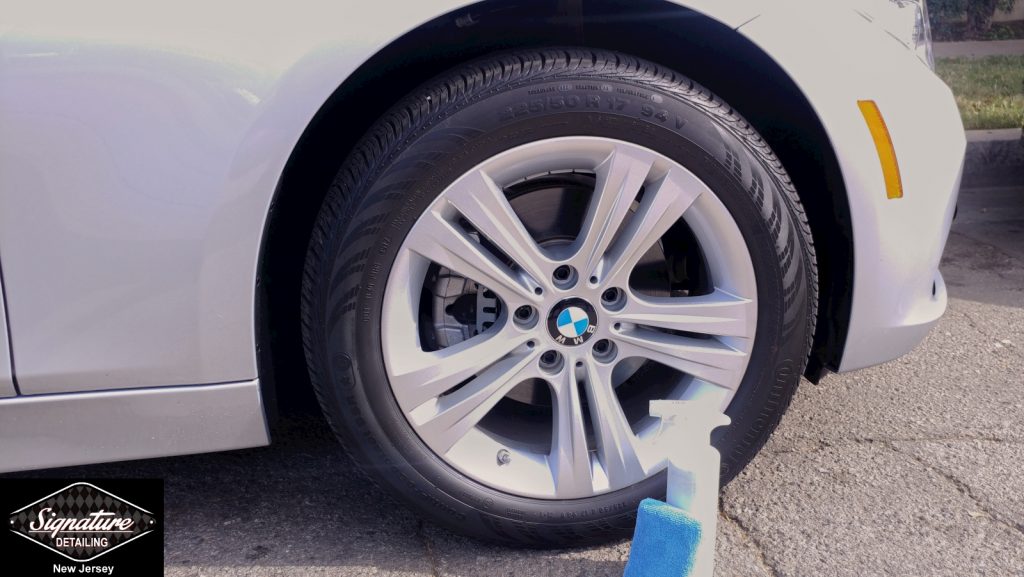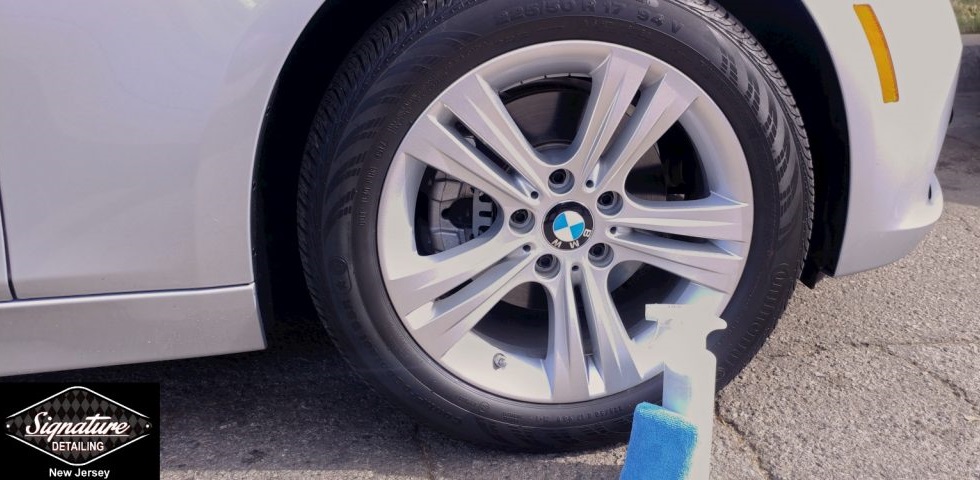
In the auto detailing industry many myths or fallacies have penetrated the industry and have become common ‘truths’. Often times these myths have a mysterious origin or some grain of truth to them so they are easily accepted. This series is dedicated to examining some of these myths. Are these actualy facts with valid truths behind them, or are they just myths with some cartoonish like fiction.
Tire Sling, meaning excess tire shine flung off of tires and onto other vehicle surfaces, is a subject often talked about in auto detailing forums, Facebook groups, and in product marketing advertisements. Almost everyone, from beginner to longtime veteran, has encountered this topic in a seemingly never-ending fashion. Why is something, so seemingly easy to do, so frequently discussed? This article will examine if the condition of “tire” or “product sling” caused by the product itself, or the method of application?
Looking at the subject of Tire Sling as a whole, a few things stood out.
- Generally tire sling is a term which is mostly used by marketing departments to sell products to consumers or the auto detailing industry.
- Observation of online discussions shows experienced detailers rarely speak of this issue.
- From a practical physical standpoint– the amount of product and method of application, NOT the brand or type of liquid, dictate if the excess product will sling onto other vehicle surfaces or not.
Tire Sling – A Marketing Approach
For the most part, when searching on the Internet, ‘tire sling’ search results appear as marketing for tire dressing products. These results usually are displayed on the product packaging or on the labels in a statement or product slogan. However, they are also included on the product use instructions.
Chemical companies generally want the end user to use large amounts of their product in order to sell more of that product over time. So by addressing that the formulation of the product itself will not cause tire sling, it suggests that the quantity does not need to be adjusted. Instead, chemical marketing departments want it believed that a specific formula that will cling to a tire is the best option to prevent messy tire sling.
This makes sense why, when filtering through online conversations, the issue is rarely discussed by veteran detailers. Professionals, who do this day in and day out, are concerned with keeping costs down and therefore will experiment with different application strategies to ensure customers do not sling product all over their newly detailed automobiles.
Tire Dressing – Usage Approaches: Amount & Method of Application
When initially examining how to apply a product, usually the first question asked is “how much should be used?” This could be for a number of reasons, but generally, it is asked in order to find the optimal amount for the best and fastest result.
Generally for most auto detailing products, like dressings and waxes, using less product is a best practice. This is because a small quantity of product goes a long way and using excess may lead to removal issues. The same can be said of cleaners, since using too much could promote smearing or leave behind excessive residue.
In the case of tire dressing; the combination of amount and application method is key to optimal coverage without a messy
The amount will always depend on the characteristics of the tire: size, style, clean, dirty, etc.
For Optimal application results, first deep clean the tires with mineral spirits or a mineral spirits based product like CarPro TarX. This will deeply clean and remove all old product and collected contamination from the surface. Additionally, it will remove the browning, also known as tire bloom, and ready the surface for the tire dressing.
Next, with a fresh Microfiber Applicator, we recommend using a water based tire dressing as these are not overly shiny or greasy and do not attract as much contamination over time. Also, water-based tires generally finish with a deep shade of neutral black.
Application Method to Avoid Tire Sling
- Spray 3 trigger pulls onto a corner of the applicator pad and dress the tire. First spread it out over the entire surface, then go back and work it into the details of the tire surface.
- Remember the small lip areas, lettering, or any deep tread areas.
- Work around the vehicle, completing all four tires. Depending on the tire type and condition, more product may be necessary.
- After all tires are completed walk back around and re-inspect. Sometimes the product may take 10-15min to fully absorb.
And there you have it, beautifully deep cleaned and dressed tires that won’t sling product all over clean vehicle surfaces.
